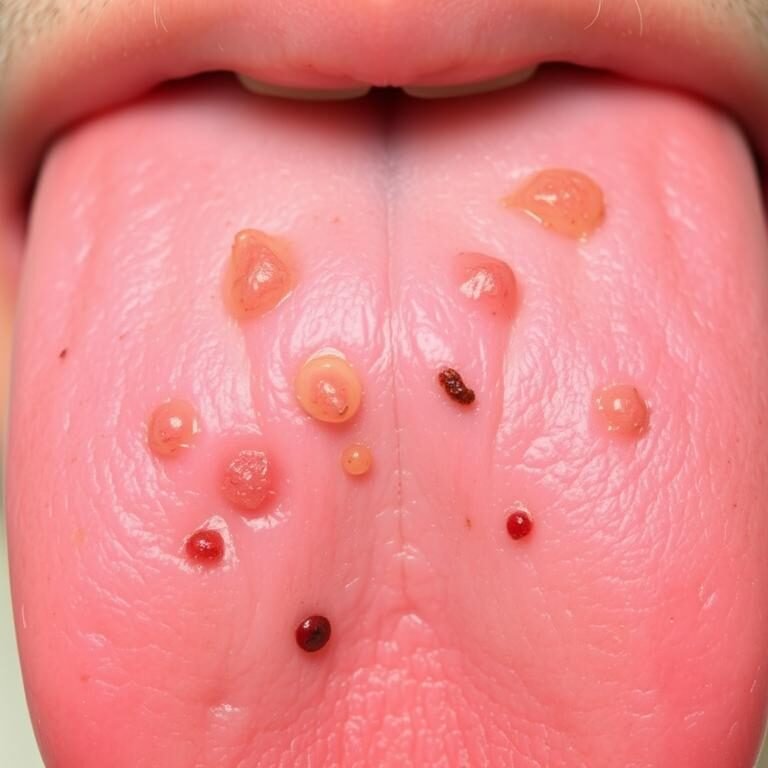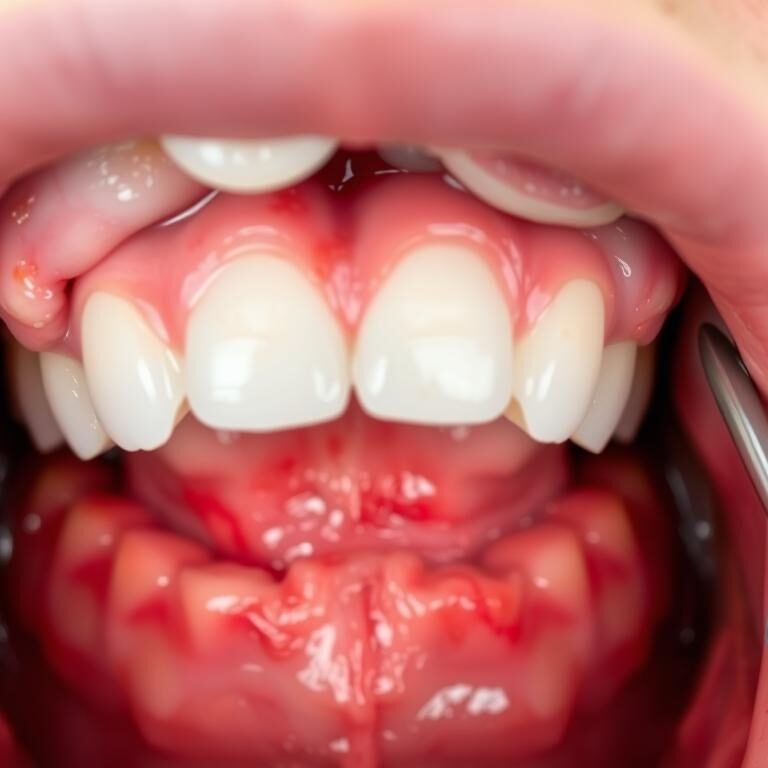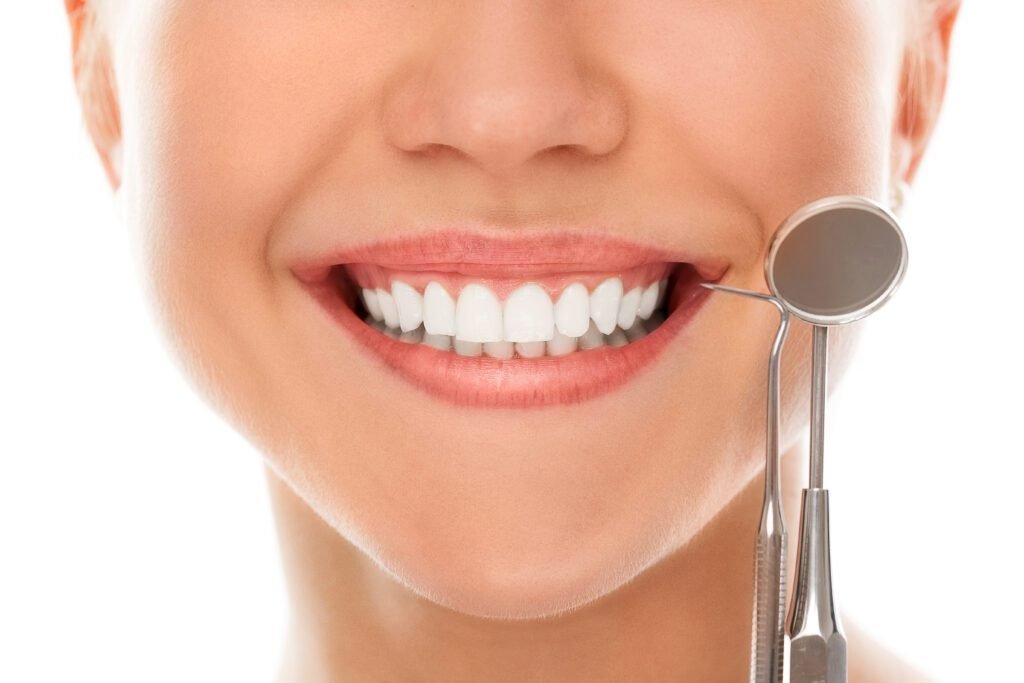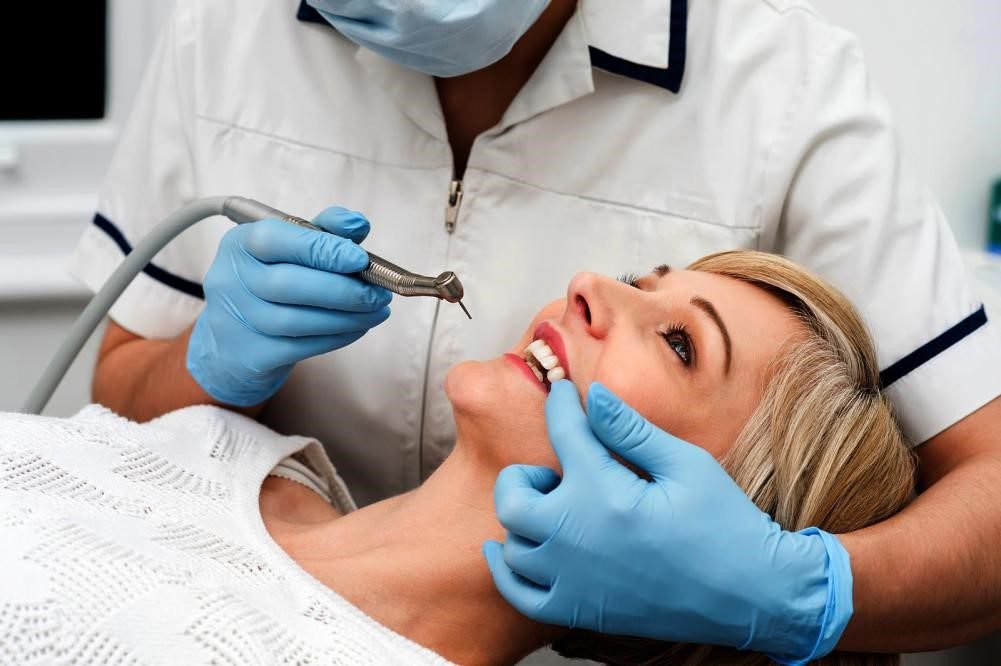Did you know that professional in-office teeth whitening treatments can provide results that last up to three years? This remarkable duration has made teeth whitening a popular choice for enhancing smiles everywhere. As cosmetic dental procedures gain traction, understanding the length of teeth whitening effects becomes essential for those contemplating treatment. The duration of teeth whitening largely depends on various factors, including the specific type of whitening method used and individual oral hygiene practices. In this article, we will explore how long does teeth whitening last, the different treatment options available, and practical recommendations for maintaining that brilliant whiteness for as long as possible.
Table of Contents
Understanding Teeth Whitening
Teeth whitening refers to a variety of whitening procedures designed to lighten the color of teeth significantly. These methods address both intrinsic and extrinsic stains, commonly resulting from foods and beverages like coffee, tea, and red wine. Beyond aesthetic benefits, teeth whitening aims to rejuvenate a person’s smile and elevate overall confidence.
The duration of teeth whitening effects varies depending on the method used. In-office treatments typically yield results that can last up to a year for most patients. Conversely, take-home whitening trays provide results that often last between six to eight months. Factors such as the severity of teeth stains and adherence to post-treatment care can influence the teeth whitening duration.
Utilizing stronger solutions and specialized tools under the care of a dentist enhances the effectiveness of whitening procedures. Patients with less severe staining may notice more prolonged effects, especially if they diligently follow care instructions. For those using take-home trays, maintaining proper wear time and avoiding certain beverages after treatment can help retain the brightened smile.

For recurring results, consistent oral hygiene practices and lifestyle choices play a crucial role. Incorporating whitening toothpaste or strips into a regular dental care routine can further assist in maintaining the vibrancy of a smile. Understanding the nuances of various whitening methods empowers individuals to make informed choices for effective and lasting smile enhancement.
- In-office treatments last approximately one year.
- Take-home trays offer results between six to eight months.
- Severe stains may require multiple whitening sessions.
- Long-lasting effects are best achieved with professional guidance.
Types of Teeth Whitening Treatments
When it comes to achieving a brighter smile, there are several effective types of teeth whitening treatments available. The primary categories encompass in-office whitening and at-home whitening kits, each offering unique benefits and considerations.
In-office whitening is conducted by dental professionals and utilizes powerful bleaching agents that can deliver immediate results. This method often provides the longest-lasting effects, with results potentially enduring up to a year or more if properly maintained. Patients typically experience noticeable whitening in just one visit, although multiple sessions may be necessary for the best results.
On the other hand, at-home whitening kits offer a more convenient alternative for those who prefer to whiten their teeth at their own pace. These kits usually include custom trays that hold the whitening gel, requiring daily use for 2-3 weeks to see significant improvements. While at-home treatments are effective, they may take longer to achieve the desired level of whiteness compared to in-office options.
- In-office Whitening:
- Immediate results
- Professional supervision
- Lasts up to a year or more with care
- At-home Whitening Kits:
- Convenient and flexible
- Custom trays for a comfortable fit
- Results typically take 2-3 weeks
Ultimately, the choice between these types of teeth whitening treatments depends on individual preferences, desired results, and lifestyle. Engaging with a dental professional can help determine the best approach to achieving that radiant smile.
In-Office Teeth Whitening: Quick and Effective
In-office teeth whitening provides a fast and effective solution for achieving a brighter smile. This professional whitening technique utilizes high-concentration bleaching agents that often receive activation through a special light or laser. The entire procedure generally takes less than two hours, delivering quick results that can last between six months and two years, depending on individual circumstances.
The immediate impact of this treatment often leads to significant shade improvement, with some patients experiencing a change of up to eight shades in just one session. While in-office treatments tend to be more expensive than at-home options, the benefits include a guided process conducted by dental professionals who ensure safety and efficiency throughout. Regular maintenance, including good oral hygiene practices, enhances the longevity of the results.
Compared to at-home whitening kits, which typically require more extended periods for noticeable improvements, in-office teeth whitening remains a popular choice for those seeking immediate transformation. Consistent use of whitening toothpaste and limiting the consumption of staining beverages such as coffee and tea can further help in maintaining the bright outcomes achieved through professional whitening.
At-Home Teeth Whitening Kits
At-home teeth whitening kits provide a practical solution for individuals aiming to enhance their smiles without the high costs associated with professional treatments. These kits typically include essential components such as whitening gel and custom fit trays, designed to comfortably mold to the shape of your teeth. Most users find that a daily routine spanning 4 to 14 days produces the best results, helping them achieve a brighter smile.

Importance of Custom Fit Trays
Custom fit trays play a crucial role in maximizing the effectiveness of at-home teeth whitening kits. Unlike generic trays found in over-the-counter options, custom trays ensure an even application of the whitening gel, which promotes optimal results while minimizing potential side effects, such as gum irritation. Dentists create these trays based on individual dental needs, allowing for a more personalized and effective whitening experience.
Comparing Over-the-Counter Options
Over-the-counter teeth whitening products often lack the same level of potency and customization as professional kits. While these options can be more affordable, they generally contain lower concentrations of whitening agents, usually not exceeding 10%. As a result, the effectiveness may vary significantly. Users may find that while at-home kits can lead to noticeable improvements over time, they may fall short of achieving the same rapid results seen with in-office treatments, which utilize stronger agents like hydrogen peroxide in concentrations up to 40%.
How Long Does Teeth Whitening Last?
The question of how long does teeth whitening last often arises for those seeking to enhance their smiles. The duration of teeth whitening effects largely depends on the type of treatment and individual dental care practices. In-office whitening procedures are known for their impressive longevity, offering results that can last anywhere from one to three years, depending on a person’s habits and oral hygiene practices.
On the other hand, professional at-home whitening kits generally yield effects lasting six months to a year. These results typically surpass those from over-the-counter options, such as whitening strips and toothpaste, which may deliver results that last for only three to six months. A complete overview of these options can help consumers understand the value and longevity they can expect.
| Treatment Type | Expected Duration of Effects |
|---|---|
| In-Office Whitening | 1 to 3 years |
| Professional At-Home Kits | 6 months to 1 year |
| Whitening Toothpaste | 3 to 4 months |
| Whitening Strips | Up to 6 months |
| Whitening Mouthwash | 3 months or more |
| Whitening Gel Trays (At-Home) | 1 week to 4 weeks for maximum results |
| Whitening Pens | Minimal, short-term results |
Maintaining proper dental hygiene plays a crucial role in prolonging the effects of teeth whitening. Regular brushing and flossing twice a day, alongside professional cleanings every six months, can significantly extend the brightness of your smile. Additionally, avoiding dark-colored foods and beverages for at least a week post-treatment helps to protect your results.
For those seeking to prolong their whitening journey, follow-up treatments suggested by a dentist can be beneficial. Understanding the specifics of how long does teeth whitening last allows individuals to make informed decisions and invest wisely in their dental aesthetics.
Factors Affecting Teeth Whitening Duration
The effectiveness and longevity of teeth whitening treatments depend on various factors. Understanding these factors can help individuals achieve and maintain a brighter smile. Two critical aspects are the type of stains present on the teeth and the oral hygiene practices of each person.
Intrinsic vs. Extrinsic Stains
Teeth can develop intrinsic or extrinsic stains, which play a significant role in determining the whitening duration. Intrinsic stains occur beneath the enamel and are often more challenging to remove. These stains can result from aging, trauma, or certain medications. Extrinsic stains, on the other hand, are surface-level discolorations caused by the consumption of staining foods and beverages, like coffee, tea, and red wine. Generally, extrinsic stains are easier to treat and respond better to various whitening methods.
Individual Oral Hygiene Practices
Oral hygiene practices significantly influence the duration of whitening results. Consistent brushing and flossing habits can help prolong the effects of teeth whitening treatments. Neglecting oral hygiene may lead to the quick return of stains and discoloration. Regular dental check-ups and professional cleanings support ongoing oral health, further enhancing the longevity of whitening treatments. By combining effective whitening methods with diligent oral care, individuals can maximize their smile’s brightness.
Common Causes of Tooth Discoloration
Tooth discoloration can stem from various causes of tooth discoloration, with lifestyle choices playing a major role. Common substances that contribute to tooth stains include:
- Coffee
- Tea
- Red wine
- Berries
- Colas and sodas
Tobacco use severely impacts tooth color, leading to significant staining. Furthermore, poor dental hygiene, such as inadequate brushing and flossing, often leads to discoloration. Another significant factor affecting tooth color includes specific medications, particularly certain antibiotics, which may cause lasting stain issues.
Age is a natural factor in tooth discoloration; as people age, the enamel wears down, making the dentin beneath more visible. Genetic factors also play a role; individuals with naturally thinner or less dense enamel may experience more pronounced staining. Environmental aspects, like excessive fluoride exposure, add to the risks of discoloration.
Other contributing elements include trauma, which can lead to discoloration in both children and adults, and dietary habits. Regular dental cleanings help to maintain a brighter smile and diminish tooth stains. By being aware of these factors affecting tooth color, individuals can take proactive measures to keep their teeth looking their best.
How to Maintain Teeth Whitening Results
Maintaining teeth whitening results is essential for enjoying a bright smile over time. A combination of professional care and diligent home practices plays a crucial role in this process.
Regular Professional Dental Cleaning
Regular professional dental cleanings every six months can significantly aid in maintaining teeth whitening results. Cleanings help remove surface stains and plaque buildup, which can diminish the brightness achieved through whitening treatments. Professionals have the tools and expertise to tackle stains that may escape at-home care.
Establishing Good Dental Hygiene at Home
To keep teeth white after whitening treatments, it is vital to maintain good dental hygiene habits at home. Establishing a strong at-home routine includes:
- Brushing at least twice daily with a whitening toothpaste
- Flossing daily to remove food particles and plaque
- Minimizing staining foods and beverages like coffee, tea, and red wine
These practices contribute to the lasting effects of whitening treatments. Engaging in touch-up treatments as recommended by your dentist will also enhance the longevity of your whitening results. Together, these efforts help uphold a bright and healthy smile.
Prolonging Teeth Whitening Effects After Treatment
Maintaining a bright, white smile after undergoing teeth whitening treatments is achievable through several proactive steps. After your treatment, it’s wise to avoid dark-colored foods and beverages for at least a week. This includes items such as coffee, red wine, and berries that are known to cause staining. Using a straw while consuming drinks can further minimize contact with your teeth, preserving the results you worked hard to achieve.
Regular dental checkups and professional cleanings play a crucial role in prolonging whitening effects. These dental treatments not only help keep stains at bay but also ensure your overall oral health remains in check. Furthermore, utilizing at-home maintenance whitening treatments can significantly extend the lifespan of your results.
Touch-up options are available for those who want to keep their smile radiant. Treatments can range from professional sessions to various kits available for home use, offering flexibility in how you maintain your results. Generally, the best approach combines both professional care and at-home maintenance.
| Method | Duration of Results | Importance of Maintenance |
|---|---|---|
| Professional In-Office Whitening | 1-3 years | Regular checkups and avoiding staining foods |
| At-Home Whitening Kits (Dentist-Supplied) | 6 months to 1 year | Follow usage instructions for optimal results |
| Over-the-Counter Whitening Products | 2 to 6 months | Periodic touch-up applications recommended |
With proper care and attention to your lifestyle, it is entirely possible to enjoy the benefits of whitening treatments for an extended period. Emphasizing good oral hygiene and being mindful of your dietary choices can make a remarkable difference in prolonging whitening effects.
Effects of Teeth Whitening Longevity
The effects of longevity in whitening significantly influence an individual’s confidence and overall presentation. Achieving lasting results goes beyond mere aesthetics; it contributes to the health of teeth and gums. For instance, in-office whitening treatments can last from six months to two years, depending on personal habits and oral care routines.
Continuous care plays a crucial role in maintaining the brightness of your smile over time. Regular brushing, flossing, and dental check-ups are essential in extending the effects of teeth whitening. Foods and beverages high in pigments, such as coffee, tea, and red wine, can quickly diminish that newly acquired brightness. Additionally, tobacco use can further accelerate this re-staining, making it vital to adopt healthier lifestyle choices.
To prolong the longevity of your whitening results, consider scheduling touch-up treatments based on your diet and lifestyle. On average, teeth whitening can last between one to three years, but consistent good oral hygiene practices greatly enhance these outcomes. After a professional treatment, it’s advisable to avoid foods that can stain for at least 48 hours to maximize the whitening effects, allowing your radiant smile to thrive.
Frequency of Touch-Up Treatments
Maintaining teeth whiteness is an essential part of enjoying the benefits of a beautiful smile. Most dental professionals recommend that individuals undergo touch-up treatments every 3 to 4 months, especially after each dental cleaning session. This frequency ensures that the effects of teeth whitening remain vibrant. For deeper discoloration, opting for professional teeth whitening treatments often yields better results than at-home kits like trays and strips.
Touch-up treatments vary based on personal habits and dietary choices. For those who indulge in staining beverages like coffee, tea, or red wine, frequent touch-ups might be required. Generally, a take-home strip system used every 3 to 6 months helps maintain results. Individuals with lifestyle factors such as smoking or heavy alcohol consumption may need to touch up their teeth more often. It’s important to remember that teeth whitening should not be done more frequently than every 3 to 4 months, particularly with full bleaching systems to avoid potential side effects.
For effective teeth whitening maintenance, implementing a regular whitening schedule can make a significant difference. Rinsing with water after consuming dark liquids can reduce staining, while keeping up with dental cleanings at least twice a year further promotes a bright smile. Individuals seeking more effective options may find that professional in-office bleaching paired with at-home touch-ups annually remains the best path to sustaining a brilliant shine.
| Touch-Up Frequency | Recommended For | Typical Duration Between Treatments |
|---|---|---|
| Every 3-4 months | Frequent consumers of staining beverages | 3-6 months for at-home kits |
| Every 6 months | Individuals without major staining issues | Annual in-office treatments recommended |
| As needed | Heavy smokers or drinkers of alcohol | After significant staining is noted |
Risks and Side Effects of Teeth Whitening
Teeth whitening can significantly enhance your smile, but understanding the risks of teeth whitening and potential side effects is essential for ensuring dental safety. While many individuals experience positive outcomes, some may face challenges during or after treatment.
A prevalent side effect is tooth sensitivity, which can vary from mild discomfort to severe pain. Sensitivity occurs due to the bleaching agents penetrating deep into the tooth enamel, exposing the dentin layer. This reaction may fade shortly after the treatment concludes.
Gum irritation or burns can arise, especially when using at-home whitening kits. Contact with the bleaching agents can irritate the gums, leading to discomfort. It is crucial to follow instructions meticulously to minimize these risks.
Additionally, enamel damage may occur if teeth whitening is not performed correctly or is overused. Understanding the balance between achieving a brighter smile and maintaining enamel health is crucial. Overuse can lead not only to dental complications but also to undesirable effects like discoloration and translucency.
To better illustrate these risks, consider the following table:
| Side Effect | Description | Duration |
|---|---|---|
| Tooth Sensitivity | Mild to severe discomfort caused by bleaching agents | Usually resolves within hours to days |
| Gum Irritation | Irritation or burns from contact with bleaching agents | May resolve in a few days |
| Enamel Damage | Weakening of enamel due to improper use | Varies based on individual oral care |
| Allergic Reactions | Severe reactions may occur in rare cases | Immediate medical attention required |
Prior consultation with a dental professional before undergoing any whitening procedure is essential. A tailored assessment can significantly help in minimizing the risks of teeth whitening and ensuring a safe experience. Taking informed steps leads to effective results while safeguarding your oral health.
Getting the Most Out of Teeth Whitening
Maximizing teeth whitening results not only involves selecting the right treatment but also understanding how to maintain the brightness achieved. Dietary choices play a critical role in preserving tooth color. Some foods and drinks can lead to staining, particularly during the early recovery phase after treatment. Awareness of your consumption habits can significantly aid in achieving long-lasting results.
Dietary Considerations
Being mindful of what you eat and drink is essential in maximizing teeth whitening results. Consider the following:
- Avoid staining foods and beverages such as red wine, coffee, tea, and sodas.
- Limit consumption of deep-colored fruits like berries and sauces that can leave marks on your teeth.
- Incorporate foods that promote dental hygiene, such as crunchy vegetables and apples, which help cleanse teeth naturally.
Sticking to a balanced diet during the initial recovery period can enhance the longevity of your bright smile.
Using Whitening Toothpaste
Incorporating effective products like whitening toothpaste into your daily dental hygiene routine can further aid in maintaining brightness. Many formulations contain active ingredients designed to combat surface stains, making them a valuable addition post-treatment. Look for:
- Toothpastes with baking soda for mild abrasiveness.
- Products with hydrogen peroxide to enhance whitening effects.
- Consistency in brushing—strong dental hygiene practices can lead to significant dividends in appearance over time.
Regular use of whitening toothpaste can brighten teeth by approximately one shade, ensuring you get the most out of your whitening experience.
| Product Type | Brightening Effect | Price Range |
|---|---|---|
| Whitening Toothpaste | ~1 Shade | $3 – $15 |
| Whitening Strips | 1-2 Shades | $10 – $55 |
| Tray-Based Systems | 1-3 Shades | $150 – $600 |
| In-Office Treatments | 3-8 Shades | $500 – $1,000 |
By making conscious decisions surrounding diet and product use, you can substantially enhance and maintain the effectiveness of teeth whitening, aligning with your dental hygiene goals.
Comparing Long-Lasting Options: In-Office vs. Home Treatments
When exploring long-lasting whitening options, a comparison between in-office vs. home whitening methods reveals significant differences. In-office whitening treatments offer quick and dramatic results, typically brightening teeth by up to eight shades in just an hour. The concentrated whitening solutions used in a dental office can penetrate deep into the tooth structure, ensuring a longer-lasting outcome that may last up to three years with appropriate maintenance.
Conversely, at-home whitening kits provide a more gradual approach. These kits often include peroxide-based solutions that require consistent daily application over days or weeks to achieve comparable results of three to six shades. While more convenient and generally less expensive—averaging around $50 compared to $300 or more for in-office treatments—at-home options require patience and diligence.
Understanding best practices is essential for effective whitening, regardless of the method chosen. Users of at-home kits should be aware that their whitening toothpaste may take several weeks to show visible results. In such cases, regular application of custom-fit trays is crucial. For those considering in-office treatments, scheduling follow-up appointments can help maintain that dazzling smile.
| Treatment Type | Time Required | Potential Shade Improvement | Cost | Longevity |
|---|---|---|---|---|
| In-Office Whitening | 1 hour | Up to 8 shades | $300+ | Up to 3 years |
| At-Home Whitening Kits | 1-2 hours daily over weeks | 3-6 shades | $50 | 6 months to 1 year |
Ultimately, the choice between in-office vs. home whitening hinges upon individual needs, budget, and lifestyle. Carefully weighing these factors will help you select the most suitable option for achieving a bright, confident smile.
Signs It’s Time for a Touch-Up
Recognizing the signs for whitening touch-ups is essential for achieving and maintaining white teeth. Various indicators can help you determine when it’s time to book your next appointment. Common signs include:
- Noticeable yellowing or dullness in tooth color.
- Increased sensitivity to hot or cold foods and beverages.
- The return of previously visible stains, particularly from coffee, tea, or red wine.
Maintaining white teeth involves more than just periodic whitening treatments. A comprehensive dental care schedule is vital for keeping your smile bright. Regular check-ups play a critical role in assessing the health of your teeth and suggesting when touch-ups are necessary. With consistent dental visits every six to twelve months, you can monitor changes in your tooth color and receive professional advice tailored to your needs.
Utilizing these signs for timely touch-ups will encourage a vibrant smile, reflecting your ongoing commitment to effective dental care. Keep an eye on how your teeth respond between treatments, and remember that good oral hygiene can help prolong the results of your whitening regimen.
| Touch-Up Indicator | Recommended Action |
|---|---|
| Yellowing or Dullness | Schedule a touch-up treatment |
| Sensitivity to Temperature | Consult your dentist for advice |
| Visible Stains | Consider at-home whitening products |
Final Thoughts on Teeth Whitening Duration
Understanding the duration of teeth whitening effects is crucial for anyone eager to achieve a dazzling smile. As teeth whitening insights suggest, in-office treatments can deliver stunning results lasting up to two years, especially when combined with good oral care. Meanwhile, at-home kits, like whitening strips, generally offer results that can last from 6 months to a year with proper adherence to the guidelines.
For those investing time and effort into maintaining brightness, routine dental checkups and cleanings are key. Regular visits to a dentist not only help in maintaining the long-lasting effects of whitening but also keep your teeth healthy. Additionally, incorporating touch-up products such as gels or pens can effectively prolong the vibrancy of your smile, making them essential tools in your whitening arsenal.
However, lifestyle choices can significantly impact the longevity of whitening results. Diet plays a role, particularly with staining foods and beverages such as coffee, tea, and red wine. Individuals who smoke should be aware that their habit may lead to quicker fading of teeth whitening results. By balancing dietary preferences with proper oral hygiene and routine maintenance, individuals can enjoy the benefits of their whitening treatments for an extended period.
FAQ
How long does teeth whitening last?
The duration of teeth whitening effects can vary based on the method used. In-office treatments generally last from one to three years, while at-home whitening kits typically yield results lasting about six months to a year with proper care.
What factors affect the duration of teeth whitening?
Factors that affect whitening duration include the type of stains (intrinsic or extrinsic), individual oral hygiene practices, lifestyle choices, and dietary habits. Maintaining good dental hygiene can significantly prolong the effects of whitening treatments.
How can I maintain my teeth whitening results?
To maintain teeth whitening results, it’s essential to practice good oral hygiene by brushing twice daily, flossing, and visiting a dentist for regular cleanings. Additionally, minimizing the consumption of staining foods and beverages, particularly right after treatment, helps preserve the whiteness.
Are there any side effects associated with teeth whitening?
Common side effects of teeth whitening may include temporary tooth sensitivity and gum irritation. These effects usually resolve shortly after treatment. It’s important to consult with a dental professional to minimize risks before undergoing any whitening procedure.
How often should I get touch-up treatments for teeth whitening?
Touch-up treatments are typically recommended every six months to a year, depending on personal habits and the method of whitening used. Regular check-ups with your dentist can help determine the need for touch-ups to maintain a bright smile.
What are some dietary considerations after whitening treatment?
After teeth whitening, it’s best to avoid dark-colored foods and beverages for at least a week. Using a straw for drinks that may stain, such as coffee or red wine, can help prevent discoloration.
Can at-home whitening kits be as effective as in-office treatments?
While at-home whitening kits can provide effective results over time, they may not achieve the same immediate brightness as professional in-office treatments. Custom fit trays in professional kits often lead to more consistent results compared to over-the-counter options.
How do I know when it’s time for a whitening touch-up?
Signs it’s time for a touch-up include noticeable yellowing or dullness in tooth color, sensitivity to hot or cold, and the reappearance of previous stains. Regular dental visits can assist in monitoring these changes.













